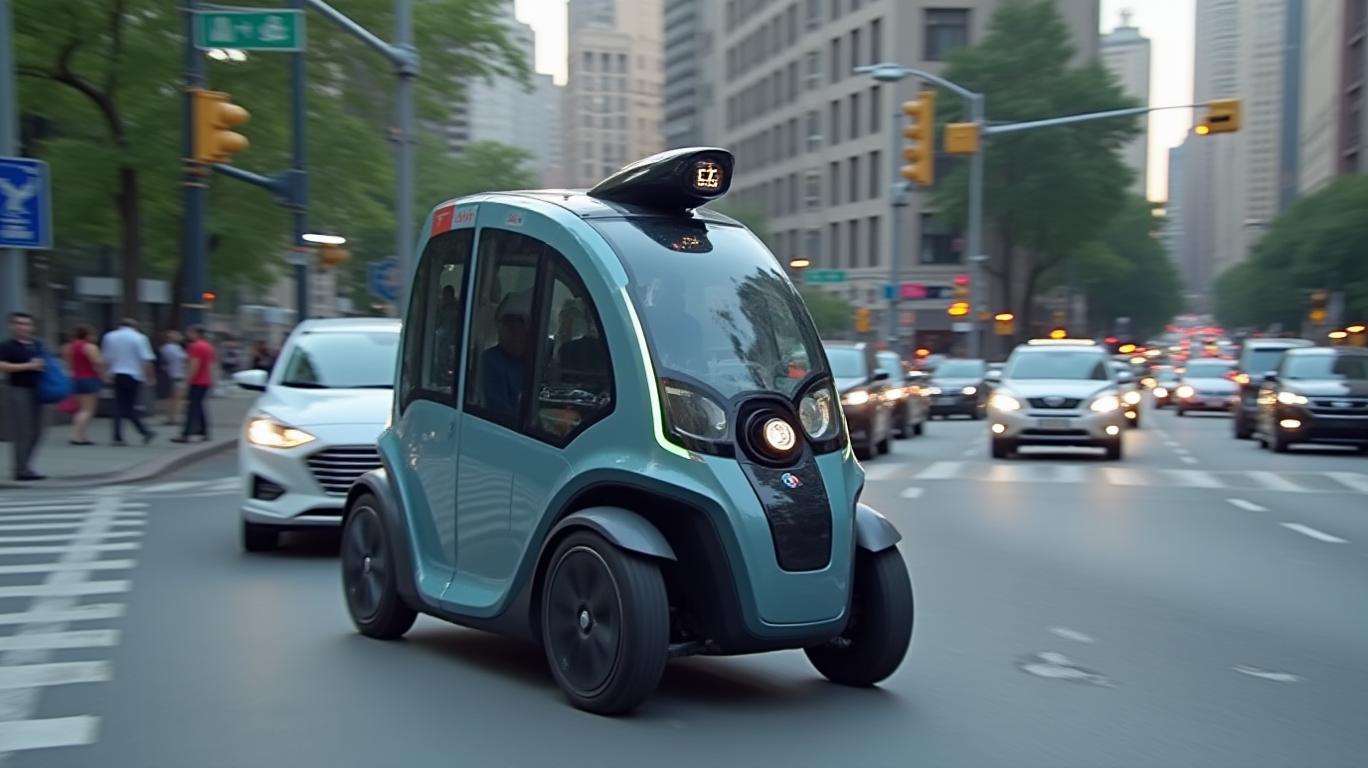Amazon's Zoox Faces Critical Safety Scrutiny Amid Software Recalls and Autonomous Hurdles
The recent software recall of Amazon’s Zoox autonomous robotaxis—sparked by a collision in Las Vegas in April 2025—has reignited debates over the safety and scalability of self-driving technologies. While the incident itself caused minimal damage and no injuries, the broader implications for Amazon’s ambitions in the autonomous vehicle market are significant. As the company races to commercialize its driverless fleet, investors must weigh the promise of this emerging sector against the very real risks of technical failures and regulatory pushback.

The April 8 crash, involving an unoccupied Zoox robotaxi and a passenger vehicle, exposed a critical flaw in the system’s ability to predict the actions of other road users. According to Zoox’s report to the National Highway Traffic Safety Administration (NHTSA), its software misjudged a perpendicular driveway scenario, incorrectly assuming the other vehicle would enter its lane. This miscalculation led the robotaxi to slow and steer right, only to brake hard at the last moment—a sequence that caused a collision. While the recall affected 270 vehicles, it was the second such action in 2025, following a March recall addressing similar hard-braking incidents involving motorcyclists.
The recurring issues underscore a persistent challenge in autonomous driving: software’s struggle to handle edge cases where human drivers often rely on nuanced, context-specific decision-making. For Zoox, which operates entirely driverless vehicles (no steering wheels or pedals), such errors could erode public trust and delay the rollout of its commercial services. Despite these setbacks, Zoox remains committed to launching robotaxi services in Las Vegas and San Francisco later this year, building on employee and media trials already conducted.
Investors are now scrutinizing how these recalls might impact Amazon’s broader strategy. While the Zoox division itself is still in its experimental phase, the parent company has poured significant resources into autonomous tech, including a $1.2 billion investment in 2020 to acquire Zoox. The recent recalls, however, highlight the high cost of iterative development in autonomous systems. Each software update—like the April 16–17 fix—requires not only engineering adjustments but also regulatory coordination and public reassurance.
Comparisons to competitors like Tesla’s Full Self-Driving (FSD) beta and Waymo’s mature testing programs reveal Zoox’s unique position. Unlike Tesla, which relies on customer data from millions of vehicles, Zoox’s smaller fleet (270 units across five cities) limits its real-world learning opportunities. Meanwhile, Waymo’s partnership with established automakers like Jaguar and its emphasis on gradual deployment (e.g., geofenced zones) may offer a safer, if slower, path to commercialization.
Yet Zoox’s potential remains undeniable. The global autonomous vehicle market is projected to reach $1.1 trillion by 2040, with ride-hailing and logistics services leading the charge. Amazon’s entry into this space aligns with its e-commerce and delivery dominance, potentially integrating Zoox into its Prime ecosystem. However, the recent recalls have raised questions about whether Amazon’s aggressive timeline—aiming for commercial launches in 2025—outpaces the maturity of its technology.
The NHTSA’s involvement further complicates the picture. The agency’s scrutiny of Zoox’s 2024 braking incidents and its 2025 recalls signals heightened regulatory attention. For investors, this poses a risk: stricter safety standards could delay deployments or increase compliance costs. Conversely, Zoox’s proactive recalls—voluntary and swift—may position it as a responsible innovator, mitigating long-term liabilities.
In conclusion, Amazon’s Zoox faces a pivotal moment. With two recalls in 2025 alone and a track record of technical adjustments, the division’s success hinges on its ability to balance speed with safety. While the market for autonomous vehicles is vast, the stakes are equally high. Investors should closely monitor not only Zoox’s software updates but also regulatory outcomes and public perception. As of now, the 270-vehicle fleet represents a small fraction of Amazon’s operations, but its trajectory could determine whether the company secures a foothold in a market projected to redefine transportation—and profitability—by mid-century.
The path forward is clear: Zoox must demonstrate that its predictive algorithms can evolve as quickly as the real-world scenarios they encounter. Until then, investors are left navigating a landscape where innovation and risk remain inextricably linked.

Comments
No comments yet